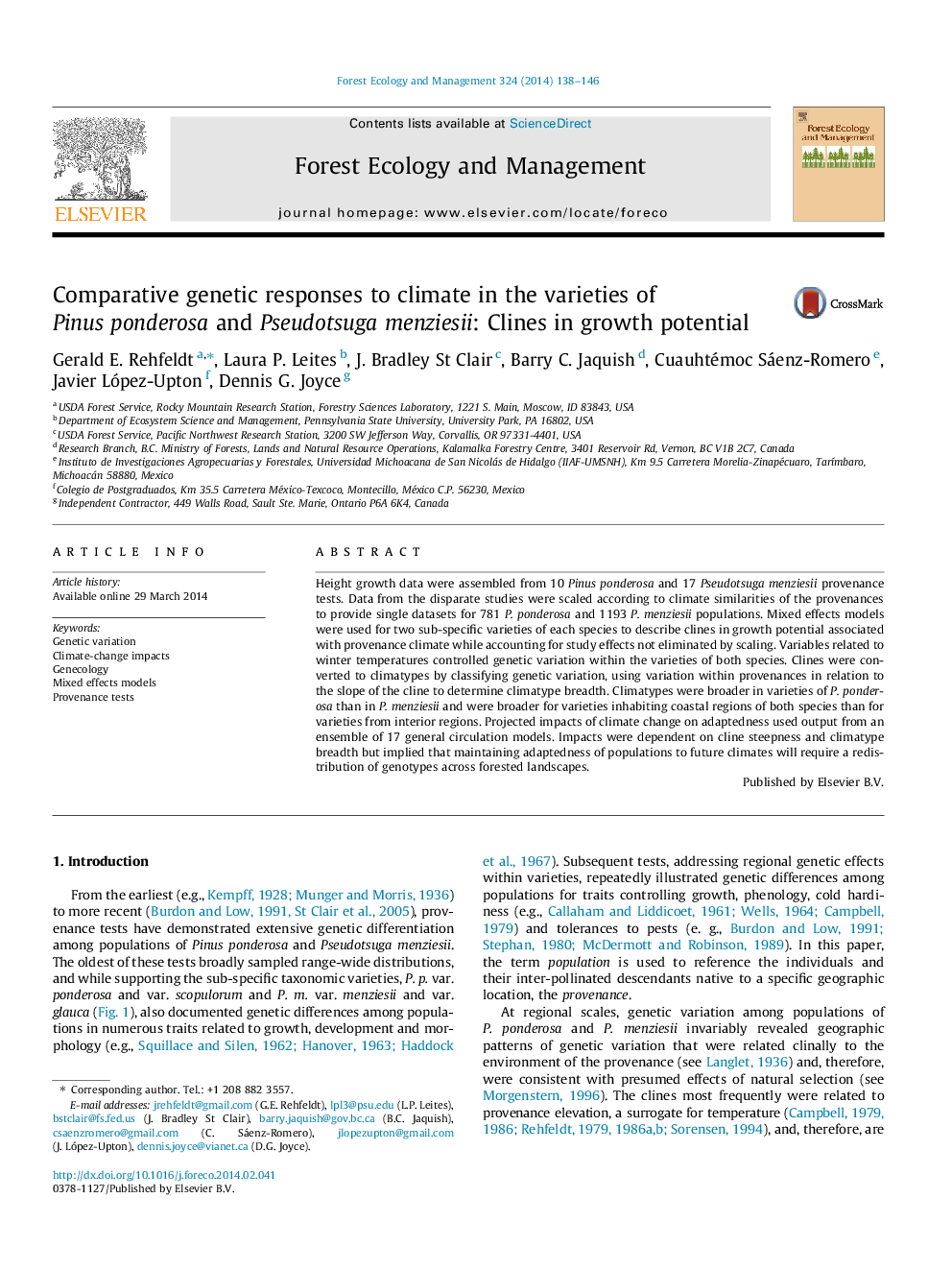| Article ID | Journal | Published Year | Pages | File Type |
|---|---|---|---|---|
| 86633 | Forest Ecology and Management | 2014 | 9 Pages |
•We use data from 10 Pinus ponderosa and 17 Pseudotsuga menziesii provenance tests.•Climatic clines within sub-specific varieties were assessed with mixed effects models.•Winter temperatures tended to best describe the clines.•Cline slope and population genetic variation determine impacts of climate change.•Few populations should remain adapted to the 2060 climate of their provenance.
Height growth data were assembled from 10 Pinus ponderosa and 17 Pseudotsuga menziesii provenance tests. Data from the disparate studies were scaled according to climate similarities of the provenances to provide single datasets for 781 P. ponderosa and 1193 P. menziesii populations. Mixed effects models were used for two sub-specific varieties of each species to describe clines in growth potential associated with provenance climate while accounting for study effects not eliminated by scaling. Variables related to winter temperatures controlled genetic variation within the varieties of both species. Clines were converted to climatypes by classifying genetic variation, using variation within provenances in relation to the slope of the cline to determine climatype breadth. Climatypes were broader in varieties of P. ponderosa than in P. menziesii and were broader for varieties inhabiting coastal regions of both species than for varieties from interior regions. Projected impacts of climate change on adaptedness used output from an ensemble of 17 general circulation models. Impacts were dependent on cline steepness and climatype breadth but implied that maintaining adaptedness of populations to future climates will require a redistribution of genotypes across forested landscapes.
